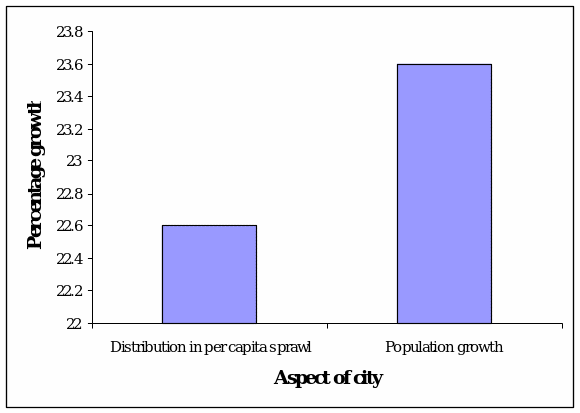Elements in population change
Population change refers to the adjustments that occur in the human attributes of a society (Engelman 2008). The changes involve all the aspects of the population such as population growth and movement into a country or from one country to another (immigration and emigration). In addition, population change also encompasses movement of people within a country (i.e. internal migration) and other demographic changes.
Changes in population are instigated by elements that act in conformity to the conflict theory that states that each individual in a society or organization struggles to maximize his or her benefits, which ultimately leads to social change (Engelman 2008). In essence, this theory implies that life is featured by conflict rather than consensus. True, population change as one of the aspects of modernization, involves changes in economic development, social and family interactions, and in the political structure.
Conflict arises as the population grows with concomitant shifts in distribution of resources. The pressure on resources in one region usually necessitates migration of people to regions that are still endowed with resources. People also move in search of economic activities such as employment. Migration leads to changes in the population structures of the two regions involved (where people migrate from where they go to) (Engelman 2008).
Movement of people causes an imbalance in population. Highly populated regions are likely to experience higher mortality due to ease of spread of diseases, road accidents, and conflicts instigated by crime. Nevertheless, urban areas may be better equipped in terms of medical amenities, resulting into lower mortality rates. All these factors further affect the population structure. Refer to Figure 1 for population growth in the UK.

Population composition
Population composition is the distribution of specified individual attributes such as sex, marital status, age, education, and occupation within a group of people in a region or country. Age and sex are the most significant of individual attributes since they affect almost all the others. In essence, studies are usually done on how age and sex structures affect mortality, migration and nuptiality.
Age and sex structure is a representation of the number of people of a certain age and sex in a given society and is derived from the inputs due to births at age zero and from removals due to death and migration at every age. Age also affects the classification of any given population. For instance, if there are more young people in a region or country, then the population is classified as a “young population.” Conversely, if a population is comprised of more old people than the young, then it is considered “old” (Engelman 2008).
Age and sex also determine the population composition in terms of nuptiality and social security. Social security is affected by age cohorts in that a country with too many old people or too many young people may be considered insecure during times of conflict. Cohort size as a factor of population composition also affects daily economic life in a society. For instance, too many old people or too many young people in a country require a lot of care (dependency). Yet the working groups may not be able to avail the resources to suffice the needs of the care.
Malthus and Marx: Two views of population growth
Malthus and Marx were of divergent opinions on the effects of population growth.
The Malthusian argument
Malthus’ argument is based on two points: that unchecked population increases in a geometric progression format whereas subsistence increases in an arithmetic ratio. Hence, at any time a large population is unable to sustain itself (Engelman 2008).
The Malthusian argument is based on the natural law that all animated life has a propensity to increase beyond the means available to sustain its existence. This further reiterates Malthus’ argument on population growth. In addition, Malthus used the natural law of necessity which implies that population growth occurs within boundaries that keep it down to the level of subsistence. The control is facilitated by poverty, diseases, war, plagues and famine (Engelman 2008). True, these catastrophes are common in high in highly populated areas. These areas are usually characterized by competition for survival as depicted by the conflict theory (Engelman 2008). Malthus also argued that the law of diminishing returns usually applies in populated areas: necessities such as food usually lag behind population growth.
The Marxist argument
Marx’ argument on “population growth” is that the phenomenon causes an increase in productive forces. Nevertheless, he noted that population growth in itself does not constitute the increase, and that the condition is only true in a capitalist context. According to Marx, population is a productive force, and overpopulation is the population that a specific production mechanism can produce (Engelman 2008).
While Malthus considered unemployment a characteristic of a poor society, Marx considered it a reflection of relative surplus production or a reserve contingent of labour (Engelman 2008). Therefore, Marx was of the opinion that a high population growth in a country is an indication of a high production capacity by that country.
Population policies
Most population policies in the world do not aim at entirely changing population structures, but provide guidance on means to have relatively manageable populations. Hence, most policies provide guidance to facilitate upbringing of families, which are the basic units of the society, in a magnificent welfare.
Citing the UK population policy as an example, it provides advice but does not influence major decisions taken by individuals. For instance, the policy does not influence the size of the population age structure or the components of the structure. In addition, the policy does not provide for any changes in population composition unless by effects of immigration (Dunnell 2000).
The policy’s major provisions aim at having a population that is well cared for and general well-being of the people. In order to achieve the obligation, the policy calls for monitoring of demographic trends and developments in order to raise healthy people. It also calls for assistance of people as part of the National Health Service (Dunnell 2000). The policy is also categorical that the ageing population should not be a cause of concern since there are provisions to handle their situation (Dunnell 2000).
Overall, most population policies in the world, like the UK policy, aim at having manageable and adaptable societies. This is achieved through regulations that call for respect of all patterns of populations and provisions to ensure that the existing populations are able to sustain themselves, not by necessarily competing for resources.
Pattern of city growth
The increasing strain of population and its concentration in large metropolitan agglomerations in the developing countries and even the developed ones strain the capacity of local and national governments to offer even the most basic amenities such as shelter, water and electricity. Such agglomerations are usually characterized by dramatic shifts in demographic and socio-economic composition of the urban areas (“Sprawl city”). Thus, large cities are not necessarily having healthy environments.
As the population structure grows, there is usually need for concomitant expansion of the size of cities (“Sprawl city”). However, this is not usually the case. The resultant scenario is usually large metropolitan agglomerations that are characterized by poor environmental conditions, poor social amenities such as schools, hospitals and so on. It is also possible for the agglomerations to be characterized by high instances of violent crime and other delinquencies. This associated with the conflict theory as competition for the insufficient resources.
One of the most common characteristics of city growth associated with population explosion is sprawling conditions (“Sprawl city”). Many cities of the world usually have a beautiful side and the “dark” sprawling slums. These are the areas characterized by mass crime poor sanitation, poor health facilities and so on.
Location of various urban basic services in such settings threatens the wellbeing and social security of the people while widening the gaps between the fortunate and disadvantaged sections. As mentioned above, conflicts arise due to the widening gaps and this divides the city into sections of the haves and the haves not. No wonder most cities have their growth level almost equal to the growth of sprawling slums as shown in Figure 2.

References
Dunnell, K 2000, Policy responses to population ageing and population decline – United Kingdom, 2008. Web.
Engelman, R 2008, More: Population, nature, and what women want, Island Press, London Sprawl City, Web.